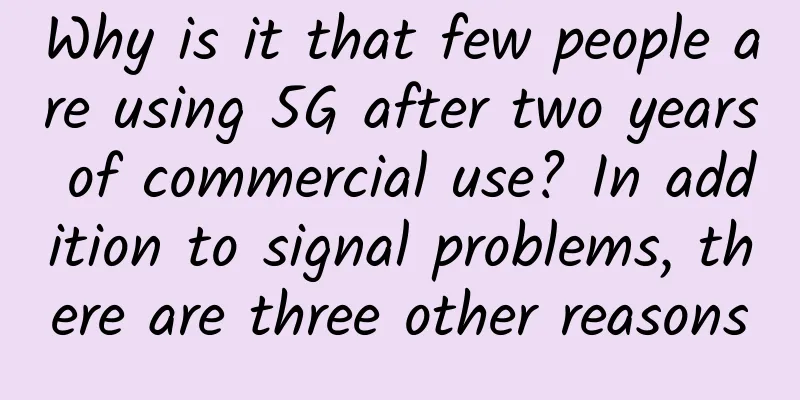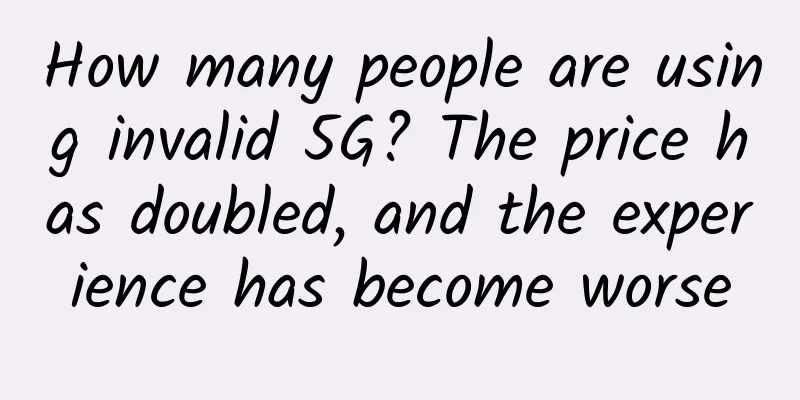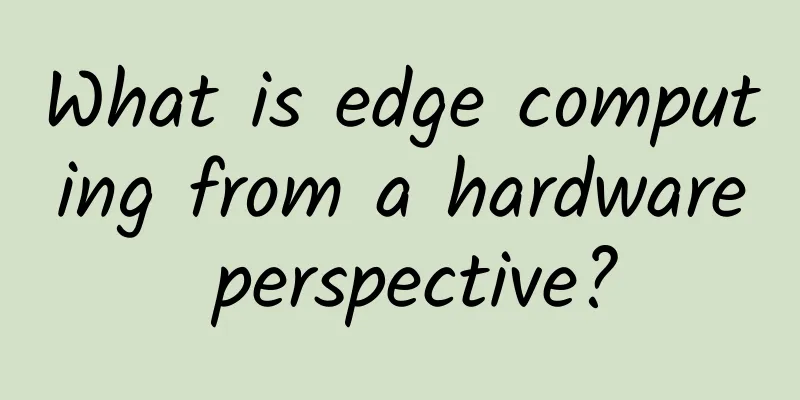Hard-core science! Analysis of the technical principles of number portability!

|
On November 11, the Ministry of Industry and Information Technology issued the "Regulations on the Management of Number Portability Services", marking that the "number portability" services of the three major domestic operators have officially entered the trial operation stage.
According to the plan, the "number portability" service will be officially launched nationwide starting from December 1. In recent days, news about "number portability" has been repeatedly screened, and I believe everyone has seen it. Xiaozaojun is also here today to join in the fun and talk to everyone about "number portability". However, what I want to talk about is not the service handling of "number portability", but the deeper content - the technical principle of "number portability". Through this article, I want to help you understand the specific implementation of this special service. More importantly, I want to take this opportunity to introduce some knowledge about mobile communication user numbers and call flows. Okay, without further ado, let’s get started!
First of all, let me explain what "number portability" is. "Number portability", as the name suggests, means changing networks with your number. For example, if you currently have a China Mobile number starting with 139, after you apply for "number portability", the number remains the same, but the operator affiliation changes - to China Telecom or China Unicom. The network and package you use also become China Telecom or China Unicom. This telecommunications service is called "number portability". In industry terminology, the real name of "number portability" should be called "number portability" or "number portability".
This service does not seem complicated on the surface. It is just changing the operator and taking the number with you. But in reality, it is not easy to implement for mobile communication systems. We actually have two mobile phone numbers, IMSI and MDN. The full name of IMSI is International Mobile Subscriber Identity. It is a kind of "permanent user identification". Each mobile phone SIM card corresponds to an IMSI number. The IMSI number consists of three parts:
MCC is 3 digits (460 in China), MNC is 2-3 digits, and MSIN is 10-11 digits. The total IMSI is usually no more than 15 digits, usually 15 digits (for example, in our country). You can enter *#*#4636#*#* on your mobile phone dialing screen to see your IMSI number. Please note that in addition to the IMSI number, there is also an IMEI number. Do not confuse the two. IMEI is International Mobile Equipment Identity, an international mobile equipment identity code (about 15-17 digits). It is also commonly known as the mobile phone serial number (mobile phone serial number), which is the "identity card" of each mobile phone hardware (two card slots have two IMEI numbers). So what are the numbers starting with 139, 153, and 189 that we usually use? The real scientific name of these numbers is MDN, Mobile Directory Number. MDN is composed of the country code (CC), mobile access number (MAC), HLR identification code, and mobile user number. I've introduced this code and that code. Are you all not confused? If you are not dizzy, let's continue! At this point, everyone should have understood that the so-called "number portability" is that the MDN number remains unchanged, but the IMSI number changes. And IMSI is your "real" number. After talking about numbers, let’s talk about the processing on the network side. The mobile communication services we currently use are actually mainly calls, text messages, and Internet access. As we all know, surfing the Internet is a matter for a single user. A user's mobile phone initiates a data service request, obtains IP and other resources, and then connects to the operator's network to access the Internet. As long as your IMSI is legal, the service is activated normally, and you have no outstanding fees, you can go online. But calls and text messages are different. They are services between two users, with a "caller" and a "called party". There is no big problem for the calling user, because his number is just a number. But for the called party, there will be trouble - the number is like a house number, people can find you by the house number, but you moved and took the house number with you, what should you do? Let's first look at what a normal call process was like before the number portability service was available: (Note: For ease of understanding, the call flow description is abbreviated.) Assume that calling user A has a China Mobile number starting with 139. When he dials the called number, the local office core network equipment (MSC, mobile switching center) will perform "number analysis" on the called number according to the designed rules. Number analysis is an important basis for call connection. Different analysis results mean different processing procedures: According to the previous design, if the number dialed starts with 138, the MSC will analyze it as a China Mobile number and handle it according to the operator's internal call process. (Specifically, the MSC will go to China Mobile's own HLR to ask the location of the called party, and then find the location. HLR is the home location register, which stores the data and information of China Mobile users.) If the called party is a "family member" and the number dialed is a China Unicom number starting with 185, the local bureau equipment will analyze it as an "other network number" and route it to the gateway bureau between operators, and then send it to China Unicom to find the called party and finally complete the call connection.
Now, the trouble comes when it comes to number portability. For example, A, whose phone number starts with 139, calls B, whose phone number starts with 138. B is a user who has applied for number portability. Although the number starts with 138, it cannot be processed according to China Mobile's internal call process, otherwise it will be sent to the wrong destination. China Mobile's MSC must treat B numbers as special cases and handle them separately. If there is only one exception, it is fine. But the problem is that this service is open to users across the country, and there will be tens of thousands of exceptions. In this case, the number analysis will become very large, which will burden the system capacity. Therefore, in our country's current network, the solution is as follows: If a called number has applied for number portability (for example, from China Mobile to China Unicom). Then, the mobile HLR will add a special prefix number to the ported number and return it to the calling MSC to tell it that the number is no longer ours. The China Mobile MSC on the calling side will perform special processing on the prefix number and directly treat it as a number from other operators. If this number jumps from China Unicom to China Mobile: The operator will first add a new NP-HLR, which is the number portability HLR, and put all the ported numbers in this HLR. The calling MSC will first check the NP-HLR for "all called numbers in other operator number segments". If it is a ported number, treat it as your own number and check your own HLR. If it is a non-ported number (that is, someone else's normal number), check the other person's HLR again. In short, it is equivalent to checking the HLR twice. Although the above solution is a bit complicated, it is very fast and user perception is not affected at all. This is the number portability implementation plan currently used in our country. Do you understand?
Haha, those who can stick to it are all warriors. Xiaozaojun recommends the core network engineer offer for free! Finally, let me make a summary. The number portability service is undoubtedly a good thing for ordinary users. After all, it increases their bargaining power and the right to make independent choices. However, from the perspective of communications engineers, this service has added some minor difficulties and troubles - when we handle faults, we can no longer quickly determine the user attributes of the complainant by the number segment as before. Different user attributes mean completely different fault handling processes and ideas. In other words, the popularization of number portability services will "slightly" increase the difficulty for communications engineers to handle faults and the time for fault recovery. Well, the above is Xiaozaojun’s technical analysis of the number portability service. Everyone is welcome to discuss in the comment section. Seeing that everyone was sending text messages to try to apply for "number portability" to change operators, Xiaozaojun couldn't wait to send a text message, and the result was -
|
<<: [5G Encyclopedia] The mysterious relationship between parameter sets and numerology
>>: 12 Questions about Routing! Do you know all of them?
Recommend
Croatia officially issues 5G license
Croatian regulator HAKOM has allocated radio spec...
Two threads, two mutexes, how can a dead loop be formed?
[[351971]] Fans’ questions must be arranged. How ...
One million new 5G base stations will be built next year. Is that a lot?
The latest news shows that my country has built a...
HostXen fully upgrades KVM, new users get 20 yuan for registration, monthly payment starts from 70 yuan for 6G memory in the United States/Japan/Hong Kong
HostXen sent the latest information, the platform...
The entire network discloses IP locations, and your location is exposed
Author | Lu Yao Reviewer | Yun Zhao Recently, IP ...
VULTR adds its 30th data center in the world: Osaka, Japan
It has been more than half a year since I last sh...
The beauty of 5G phone is like being in your ear
[[352290]] This article is reprinted from the WeC...
RackNerd cheap VPS summary starts from $9.89/year, self-service IP change, multiple data centers in Los Angeles/San Jose/Seattle/New York, etc.
Two months ago, I did a summary of RackNerd's...
HostKvm newly launched Russia/Hong Kong high-defense VPS, 50% off for Mid-Autumn Festival
HostKvm has launched new products, this time with...
Analysis of Difficulties in Operator SD-WAN Deployment
1. Introduction Software-defined wide area networ...
Interesting, 5G base station and fire hydrant logo combined
Following the integration of 5G base stations wit...
The difference between TCP and UDP and detailed explanation of flow control, congestion control, fast retransmission, and fast recovery algorithms
[[413351]] Differences between UDP and TCP In the...
Tian Suning: From the Internet of Everything to the Intelligent Internet, a new company species, "customer operator", is born
From November 7 to 9, Wuzhen, a water town in the...
Five hybrid video conferencing tips for effective collaboration
[[417444]] When Pixoul, a Dallas-based web design...
Three-minute review! A quick overview of 5G industry development trends in May 2021
After the rapid development in 2020, 2021 is a cr...

![[6.18]spinservers: $89/month-2*E5-2630Lv3/64GB/1.6TB NVMe/10Gbps bandwidth/Silicon Valley data center](/upload/images/67cabe68b64e4.webp)







